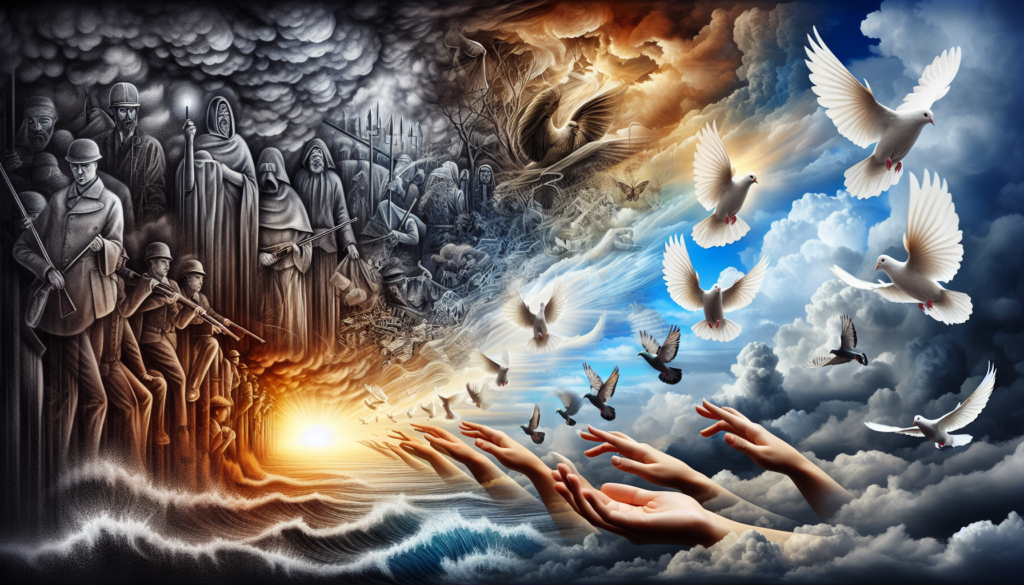Throughout history, there have been figures whose actions have sparked global reflection on the nature of morality, love, and humanity. These figures, while representing some of the darkest aspects of human behavior, also serve as catalysts for deep spiritual discussions. By examining their roles, we can explore how such extreme examples challenge us to reflect, grow, and evolve as a collective.
The Role of Historical Figures in Spiritual Discussions
Historical figures known for their extreme actions often serve as focal points for spiritual and moral discussions. They provide a backdrop against which humanity can examine its values, choices, and potential for growth. The discussion is not about excusing or justifying atrocities but rather about understanding the complexities of free will, morality, and spiritual evolution.
Catalysts for Global Reflection
- Challenging Our Morality:
- These figures force us to confront our definitions of good and evil. They make us question what we stand for as individuals and as a society, prompting a re-evaluation of our moral compass.
- Promoting Love and Compassion:
- In stark contrast to their actions, these figures remind us of the importance of love, empathy, and compassion. They urge us to look beyond hatred and fear, promoting a deeper understanding of humanity’s capacity for goodness.
- Understanding Free Will:
- The existence of such figures underscores the concept of free will and the potential for both creation and destruction. They illustrate the consequences of choices made in the absence of love and understanding, prompting discussions on how free will can be aligned with higher moral values.
The Spiritual Implications of Dark History
Lessons in Forgiveness and Healing
- Forgiveness:
- While forgiving acts of extreme cruelty is incredibly challenging, these discussions push us to explore forgiveness as a path to healing. Forgiveness does not mean forgetting or excusing; rather, it is about releasing anger and hatred to foster personal and collective healing.
- Healing and Growth:
- Reflecting on dark historical events can lead to healing and growth. They compel us to address trauma, both individual and societal, and encourage us to build a future rooted in love and mutual respect.
A Call to Unity and Change
- Unity in Diversity:
- These discussions emphasize the need for unity amidst diversity. They highlight that despite differing backgrounds and beliefs, humanity shares a common responsibility to cultivate a world based on mutual respect and understanding.
- Catalysts for Positive Change:
- While such figures represent the potential for harm, they also become catalysts for positive change. They remind us of the urgency to promote peace, equality, and justice in our world.
Embracing the Essence of Humanity
The spiritual examination of dark historical figures urges us to delve into the essence of humanity. It challenges us to understand our shared humanity beyond labels and divisions. Through these discussions, we can embrace our potential for love, growth, and transformation.
A Journey Toward Spiritual Evolution
- Personal Reflection:
- Encouraged by these discussions, individuals are prompted to reflect on their values and actions. It is a call to align personal choices with the principles of love and compassion.
- Collective Responsibility:
- As a collective, humanity is reminded of its responsibility to learn from history. By addressing past mistakes, we can work toward a future where love and understanding prevail.
Conclusion
The role of historical figures in spiritual discussions is complex and multifaceted. They challenge us to reflect on our values, explore the depths of our compassion, and embrace our shared humanity. By engaging in these discussions, we open ourselves to spiritual growth and transformation, striving to build a world rooted in love, understanding, and mutual respect.

